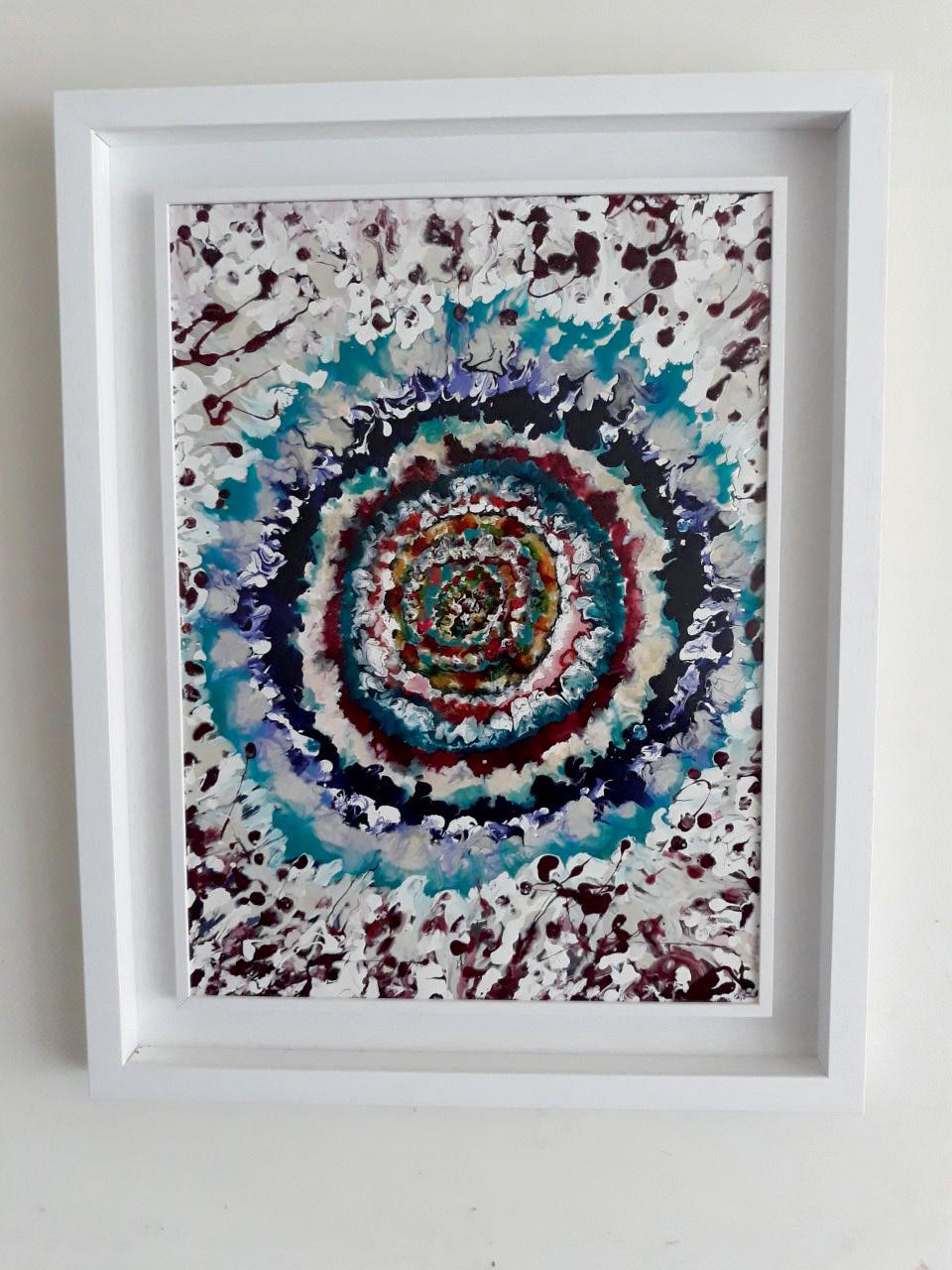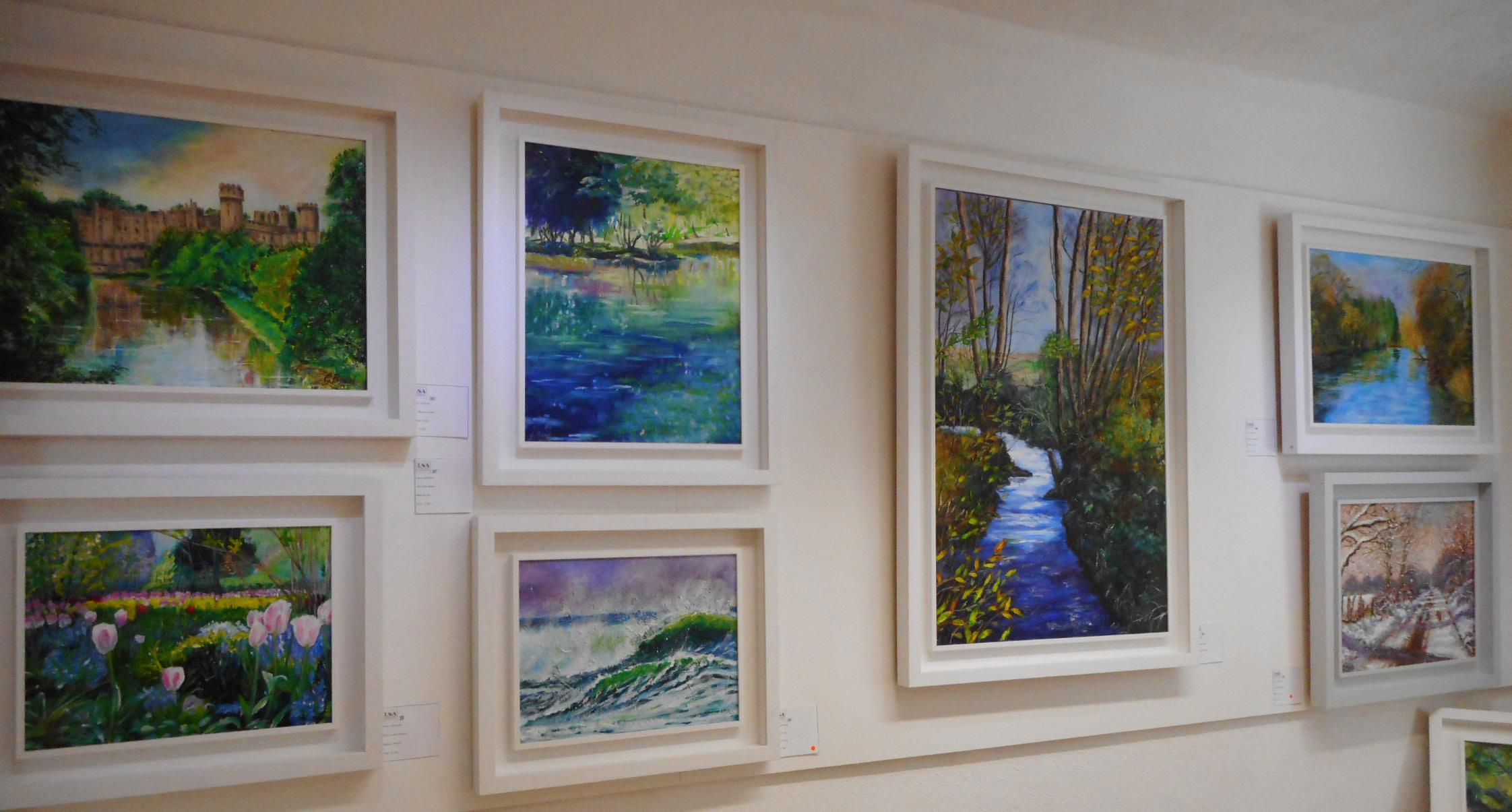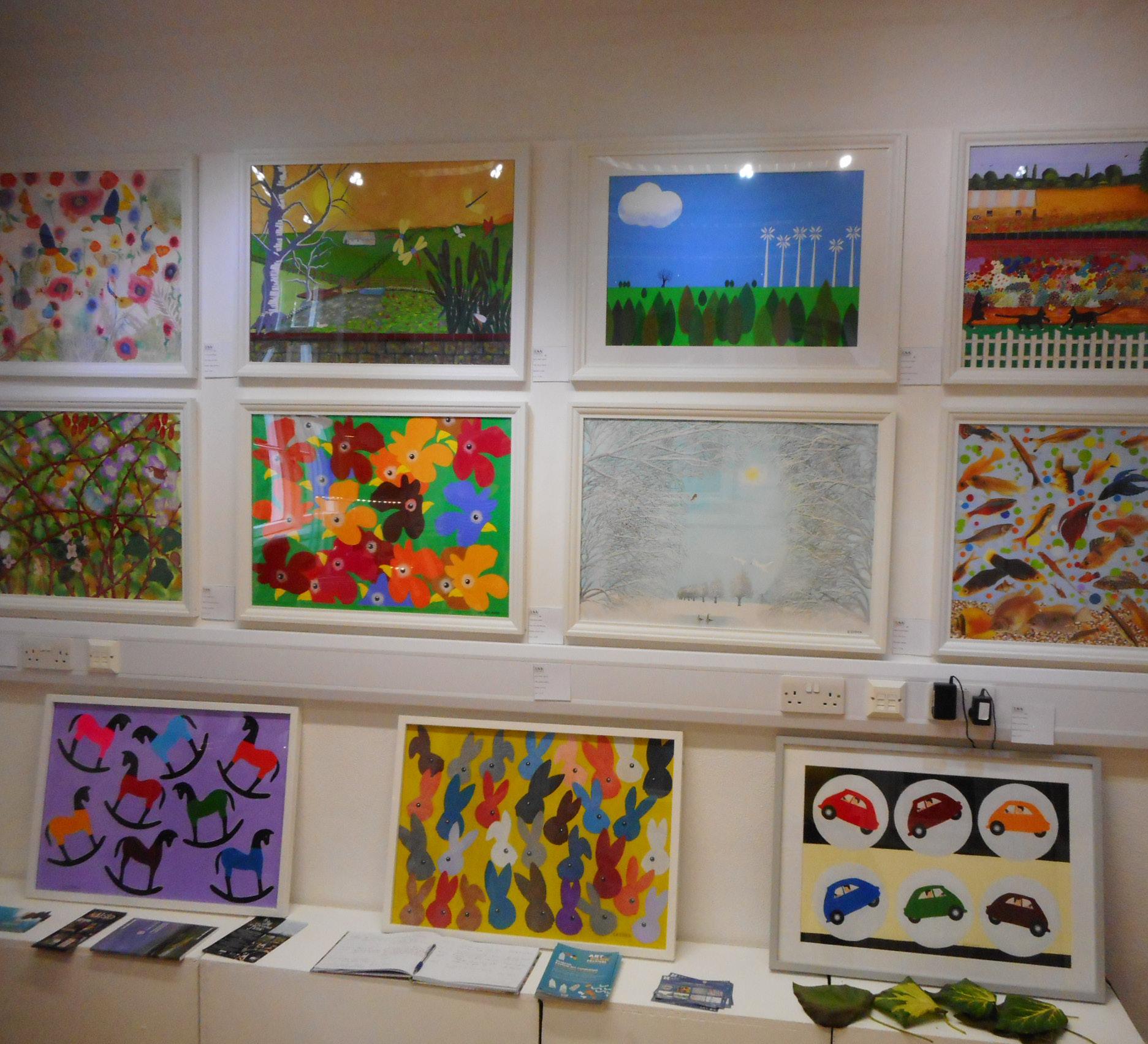
8 minute read
East Lodge exhibitions
Lucy Ovanesyan reviews recent exhibitions at East Lodge
East Lodge was home to the exhibition of the LSA members Sonia Bublaitis and Ian Anthony Paul from April 3rd until April 28th, 2019. Showcasing an extraordinary variety of abstract art, the exhibition was well-received within the LSA community and beyond, with visitors to East Lodge unequivocally agreeing on the great creative and expressive possibilities the art of abstraction seems to hold. While both Sonia and Paul work in the field of abstraction, their approaches to style and expression are distinctively different. Considering how abstraction is adopted as a creative tool by the two artists and examining how their approach to abstraction varies, opens up exciting avenues for interpretation for their work and appreciation of its significance.
Advertisement
Ian Anthony Paul’s work welcomed the visitor to the exhibition, (figs. 1–2). Immediately striking were his series titled Cathedral and Fractured, fascinating with their seemingly orderly and well-thought-out composition. Despite the immediate apparent flatness of these canvases which comes about as a result of the media in which Paul paints – acrylics, his paintings have the power to keep drawing the viewer back in, prompting them to consider the multiple layers of the composition. Paul’s canvases, similarly to Sonia’s, help highlight the significance behind the painting process, one can’t help but imagine and wonder at how their work must have come about. The selection of Paul’s paintings included in the exhibition was effective in the great contrast established by his more linear works such as Fractured, and the more painterly ones like Blue Tempest, reminiscent of a more organic approach to abstraction. Both Paul’s and Sonia’s work may be read as exemplary in colour theory too, successfully capturing various emotive essences and interpreting these through the language of colour. It is important to note that Paul usually responds to the paintely process as it is happening, he shares that he lets the creative process “determine the direction in which the piece progresses.” This suggests a reading of his work as offering an insight into his own personal perception of the world. One further element of Paul’s work is suggested in the tribute he paid to his mother in the exhibition, his acknowledgement of the importance which her own art has had for his development as an artist is heart-warming and inspiring.
Sonia Bublaitis’s background in the arts may also be said to have been inspired by her mother, also an artist. It would be interesting to study closer the artistic background of both Sonia and Paul so as to see how it has informed their practice and what it may help us see in addition to what we already understand. Sonia’s work featured in the exhibition illustrated the vast visual vocabulary she employs in creating the poems of abstraction her canvases represent. The wide range of media in Sonia’s work is incredibly effective, she has explored the realm of more traditional media such as oil to more unconventional techniques such as mirror painting and perspex, as illustrated in Freedom and Other Worlds, (fig. 3). The latter helps add a further dimension of reflectivity in her work which effectively invites the viewer to the world of her art. Another prominent aspect of the relationship between the viewer and the work of art, as reflected in Sonia’s art, is the question of whether there is indeed a right way and distance at which to look at abstract art. This is key, as it helps create various possible means of interpreting her work. There appears to be no ultimate solution, looking at Outburst for example, one may consider various aspects of the same canvas, depending on whether they choose to examine it from up close or from a distance, (fig. 4). Sonia’s abstraction presents cleverly crafted visual riddles that invite the viewer on a journey through a symphony of colour and impressions. Sonia’s Deep Seas was recently featured in the Blue Mind exhibition which took part in the 3rd On 3rd Gallery in Jamestown, New York. Ian’s Fractured has previously gotten through the first round of judging submissions for the annual RA Summer Exhibitions. We’d like to congratulate both artists on these wonderful achievements and wish them all the best of luck for their future creative endeavours!
Figure 2: Exhibition still from Ian’s display
Opposite. Figure 3: Sonia Bublaitis Other Worlds Courtesy of the artist
Following Sonia and Ian’s exhibition in April, East Lodge also hosted the Mixed Group Showcase featuring Isabel Balboa, Gill Buick and Brian Edden from 1st until 26th May, 2019. This was another splending display showcasing the great talent of LSA members, successfully encompassing the great breadth of interests and influences that have shaped the artists’ responses to the world they live in.
Isabel Balboa’s intricate art introduced the viewer to the exhibition, (figs. 5–6). Isabel’s background in Asian calligraphy is fascinating and it is worth paying close attention to in order to appreciate her work most fully. Isabel has studied in Japan and South Korea for a number of years, this presented her with the opportunity to gain an insight into the wonderful world of calligraphy, which has significantly informed her work ever since. Isabel’s art portrays her engagement with various techniques, her sumi-e ink paintings, for example, are reflective of the attention to detail with which she approaches her work. The art of calligraphy is challenging and requires patience, the process itself is central to artistic creation, with the artist’s intention being definite from the very beginning. It is therefore clear that Isabel’s art must be read as well-thought-out and precise. However, more importantly perhaps are the possibilities that her art allows for interpretation, her work is so full of wisdom and sensibility about life, creation and everything in between.
Isabel’s exhibition, as revealed by the artist herself, was envisioned as an itinerary that would take the visitor on an imaginary journey of growth and self-discovery. A principal theme is springtime and its transformative power, both in its literal and conceptual meaning, Isabel suggested that an answer to the latter might be found in Asian philosophy. Metaphors and allegories abounded. While the plum blossom is the first one to bloom, as illustrated by its leading position in Isabel’s itinerary, the cherry blossom symbolising a short-lived stage of vanity, was found at a later stage of the exhibition. The variety of media exhibited in Isabel’s work was further fascinating - including both traditional scrolls as well as canvases serves as a testament to the artist’s virtuosity in deploying such long-standing and established techniques so as to open up worlds of freshness of interpretation and reading of seemingly trivial, yet universal 9


10 matters such as the beauty of spring and new beginnings.
The numerous beautiful worlds of Gill Buick’s art followed, (fig. 7). Gill’s part of the exhibition was packed with her charming multi-layered canvases of incredible textural quality. The presence of all sorts of materials such as sand, grit, tissue paper and texture paste, as Gill herself writes, is in the hope of creating further interest in her paintings. Her work is figurative and is seemingly inspired by familiar settings and environments, there is a particular welcoming feeling that her art invites. Similarly to Isabel, Gill also employs mixed media in the creative process, the use of oil and acrylics for example allow for her to bring about a certain notion of layering, which seems to be central to her technique and is fully realised in the texture of her works. Process is also key to Gill, as she embraces however messy and decentering it might be at times.
Gill’s approach to painting suggests a certain degree of spontaneity which is not present in Isabel’s art due to the rigid nature of her technique. Nonetheless, Gill’s and Isabel’s love for painting proudly shines through, as it also does in Brian Edden’s work, the final component of the Mixed Group Showcase exhibition. Overarching motifs which characterise Gill’s paintings seem to be her commitment to blue and purple, beautifully complimented by yellow, her use of colour is balanced and harmonious, despite her seemingly

Figure 7: Exhibition still from Gill Buick’s display
restricted colour palette. Furthermore, through her depiction of familiar scenes, Gill’s art has the potential to invite its viewer to appreciate their surroundings better, to find beauty in the commonplace and to trust the process, cleverly crafted by spontaneity and great timing, precisely in the manner these seem to have also informed Gill’s work.
The last element which constituted the Mixed Group Showcase exhibition was Brian Edden’s distinctly colourful, quirky and often rather humorous art, precisely as summarised by the youngest visitors to East Lodge as “fun art,” (figs. 8-9). Brian’s exhibition immediately struck the viewer as a world of colour, with all kinds of imagery and possibilities of interpretation. Brian himself shared that his work is all made up from memory, each element in his compositions is supposedly inspired by his past, it is given character through the artist’s expressive use of colour and line. Process in Brian’s art functions rather differently to Isabel’s, he revealed that often he has no set intentions behind his work, embracing the element of spontaneity to the process is a feature that Brian and Gill seem to share. Brian’s harmonious and balanced compositions nonetheless suggest a sensible and thoughtful approach to his painting. Brian’s background in aircraft engineering, combined with his life-long passion for wildlife and horticulture, inform his art, this is particularly wellillustrated in his subject matter and his technique. Brian experiments boldly with acrylics, oil and watercolour, exploring the creative possibilities behind each medium, further branching out into the world of poetry as well. He is just as proud of his poems as he is of his painting, he is authentic and genuine throughout, every single element of Brian’s artistic oeuvre is seemingly characterised by his brilliant sense of humour. His attention to detail is further fascinating, he revealed that for his print work he uses stamps he has crafted by hand, as he is driven by his desire to make art that is personal and relatable. This seems to be the chief aim of Brian’s work which is undoubtedly so persuasively achieved by his numerous colourful canvases..


Figure 5: Brian Edden at East Lodge










